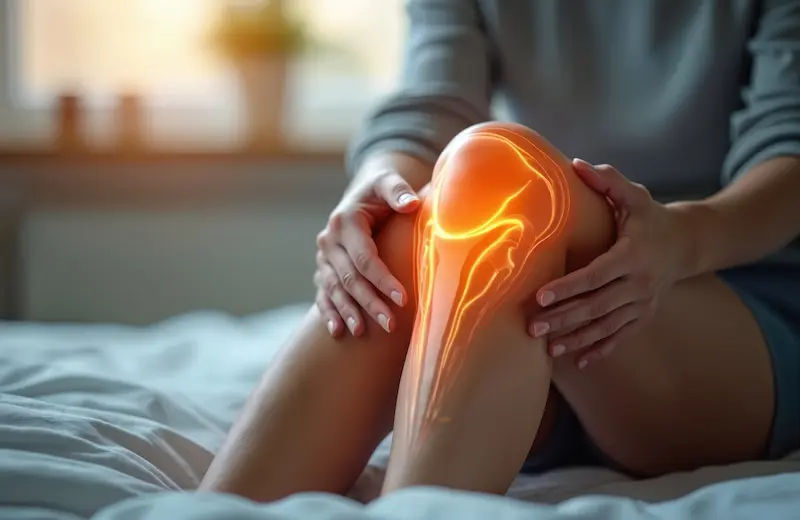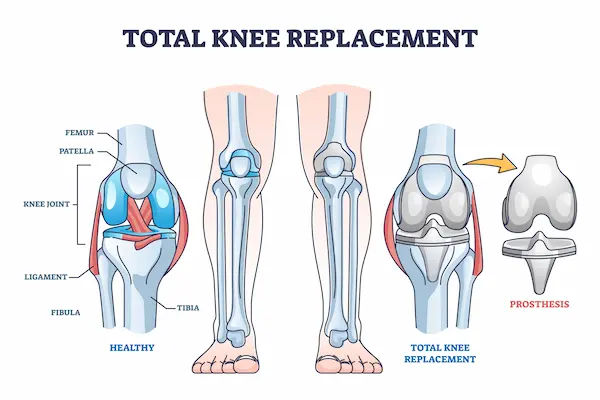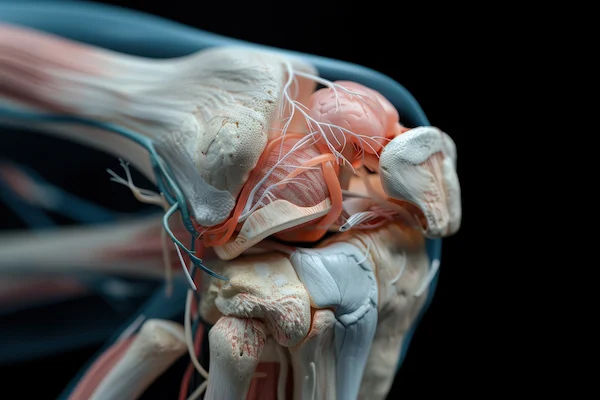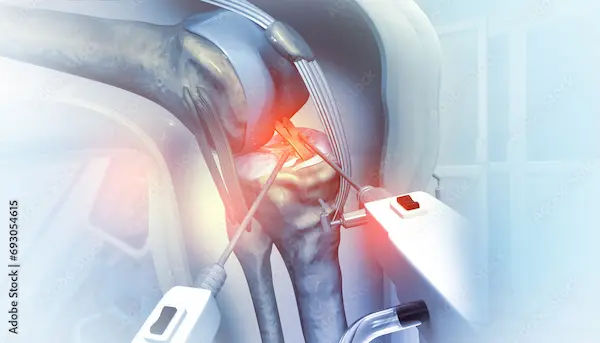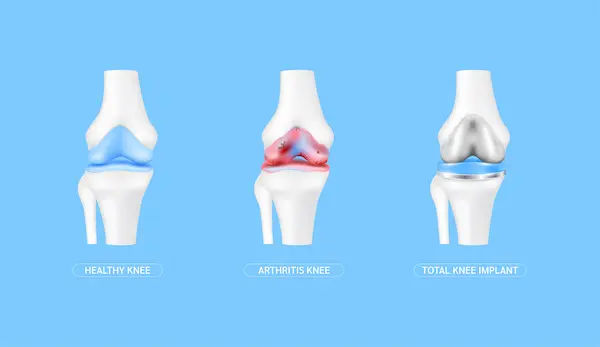A Guide to Pinless Computer Navigation Knee Replacement
Know what is pinless computer navigation knee replacement is, how it works, the top benefits, comparison with the knee replacement method and more.

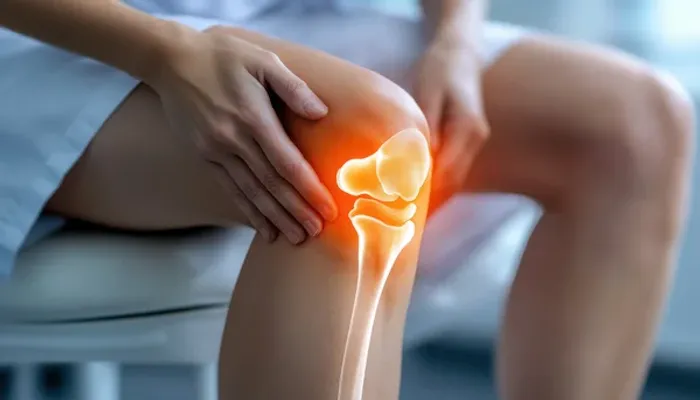
Introduction
Chronic knee pain can feel like a life sentence, limiting your ability to walk, climb stairs, or even enjoy a simple stroll. If you've exhausted non-surgical options, a knee replacement might be the recommended path to reclaiming your mobility. But the world of joint replacement is evolving rapidly, moving beyond traditional methods towards unprecedented precision. This article explores one of the most significant advancements: the pinless computer navigation system knee replacement. This innovative approach combines the accuracy of computer guidance with a less invasive technique, eliminating the need for pins drilled into your thigh bone. We will guide you through how this technology works, its profound benefits—from enhanced alignment to a potentially faster recovery—and how it compares to conventional surgery. If you're considering a knee replacement, understanding the pinless computer navigation option could be the key to making a more informed and confident decision about your health.
What is Computer-Navigated Knee Replacement?
Computer-navigated knee replacement is a sophisticated surgical technique that uses infrared cameras and smart instruments to create a real-time, 3D digital model of your knee joint. Think of it as a GPS for your knee surgery. Instead of relying solely on the surgeon's eye and mechanical guides, the computer system provides continuous feedback on the position of your bones and the surgical instruments. This allows for meticulous planning and execution, ensuring the new implant is positioned with optimal alignment and balance. The goal is to replicate your knee's natural biomechanics as closely as possible, which is crucial for the implant's function and longevity. While computer navigation itself has been a game-changer, the latest evolution addresses a specific drawback of earlier systems: the need for stabilising pins.
Consult a Top General Practitioner for Personalised Advice
The Limitation of Traditional Navigation: The Problem with Pins
Early computer navigation systems required surgeons to attach tracking devices directly to the femur (thigh bone) and tibia (shin bone). To secure these trackers, metal pins were drilled into the bones, away from the main surgical site. While effective for tracking, these pins created their own set of problems. The additional incisions could lead to more scarring and postoperative pain. More importantly, the pin sites in the femur created stress risers—small points where the bone was weakened, presenting a rare but serious risk of a periprosthetic fracture (a break around the implant) after surgery.
The Pinless Solution: How It Eliminates Extra Incisions and Risks
Pinless computer navigation technology ingeniously solves this problem. Instead of using pins, the system employs trackers that attach directly to the bone within the primary surgical incision. These low-profile devices clamp onto the bone securely without the need for drill holes. This pinless approach means there are no additional incisions in the thigh, significantly reducing the risk of postoperative fractures related to the navigation system itself. It represents a true refinement, offering all the benefits of surgical navigation—unmatched accuracy—while making the procedure inherently safer and less invasive.
How Does the Pinless Computer Navigation System Work?
The process is a fascinating blend of surgical skill and digital intelligence. It can be broken down into three key stages.
Step 1: Mapping the Knee's Unique Anatomy
Once the surgeon makes the initial incision, the first step is to register your knee's unique geometry. The surgeon uses a pointer tool to touch specific anatomical landmarks on your femur and tibia. As each point is touched, the optical cameras track its position, and the computer software builds a highly accurate 3D model. This model includes data on the centre of your hip, knee, and ankle, allowing the system to calculate your leg's precise mechanical axis—the fundamental blueprint for a well-aligned knee replacement.
H3: Step 2: Real-Time Data and Surgical Guidance
With the virtual model active, the surgeon proceeds with preparing the bone surfaces for the implant. Specialised instruments are also tracked by the navigation system. As the surgeon moves these tools, the computer screen displays real-time data on alignment, orientation, and bone resection levels. This is like having a co-pilot constantly verifying that every move is according to the pre-operative plan. The surgeon can make micro-adjustments on the fly, ensuring a level of precision that is difficult to achieve consistently with manual techniques.
Step 3: Precision Implant Placement
Before the final implant is secured, the surgeon can use trial components to assess the knee's stability and range of motion. The navigation system provides quantitative data on gap spacing between the bones and soft tissue balance throughout the entire arc of movement. This allows for fine-tuning to create a knee that is not only well-aligned but also stable and balanced, which is critical for a natural feel and long-term success. This focus on surgical accuracy is a hallmark of the pinless computer-assisted knee surgery process.
Top Benefits of Choosing a Pinless Knee Replacement
Opting for a pinless knee replacement offers a multitude of advantages over both traditional surgery and older navigated techniques.
Enhanced Accuracy for a More Natural-Feeling Knee
Studies have consistently shown that computer navigation improves the accuracy of implant positioning and limb alignment. Proper alignment reduces uneven wear on the polyethene insert, which can lead to premature failure. A well-aligned knee also functions more naturally, which can translate to better overall function and satisfaction. Patients often report a knee that "feels right" and allows for a more normal gait.
A Less Invasive Procedure and Faster Recovery
By eliminating the pin sites, the procedure is truly less traumatic to the body. Without the additional incisions and bone drilling, patients often experience less soft tissue pain and swelling postoperatively. This can lead to a faster recovery time, with many patients able to bend their knees and walk with assistance sooner than after traditional surgery. Reduced initial pain can also make the crucial early stages of physical therapy more manageable.
Reduced Risk of Post-Surgical Fractures
This is a primary safety benefit. The removal of pin holes in the femur directly eliminates a potential source of weakness in the bone. This significantly lowers the already small risk of a periprosthetic fracture above the knee implant, providing greater peace of mind for both the patient and the surgeon during the recovery period.
Potential for a Longer-Lasting Implant
The ultimate goal of any joint replacement is durability. Since implant longevity is heavily influenced by precise alignment and soft tissue balance, the accuracy afforded by pinless navigation is a strong contributing factor to the implant lasting 20 years or more. By minimising uneven stress on the implant components, the technology helps protect your investment in a pain-free life.
Pinless Navigation vs. Traditional Knee Replacement: A Clear Comparison
When weighing pinless navigation vs traditional knee replacement, the differences are significant. Traditional surgery relies on intramedullary rods inserted into the thigh bone to guide cuts, which can disrupt the bone marrow and have been associated with fat emboli—tiny particles that can travel to the lungs. It also depends heavily on the surgeon's visual assessment and experience. While skilled surgeons achieve excellent results, the margin for error is wider. Pinless navigation, in contrast, is extramedullary (outside the bone canal), avoiding those risks, and provides objective, data-driven guidance that enhances consistency and precision, potentially leading to better outcomes for a wider range of patients.
Are You a Candidate for Pinless Computer Navigation Surgery?
Most patients who are candidates for a total knee replacement are also candidates for a pinless navigated procedure. It can be particularly beneficial for patients with complex deformities, such as bowed legs (varus) or knock knees (valgus), where achieving perfect alignment can be more challenging. It is also an excellent option for younger, more active patients who want to maximise the longevity of their implant. The best way to determine if you are a candidate is to consult with an orthopaedic surgeon experienced in this technology. If you are experiencing persistent knee pain and considering surgical options, consulting an orthopaedic specialist online with Apollo24|7 can be a great first step to discuss your suitability for advanced procedures like pinless navigation.
Conclusion
The journey to overcoming debilitating knee pain is a significant one, and the choice of surgical technique can profoundly impact your experience and outcome. Pinless computer navigation system knee replacement represents a meaningful step forward in orthopaedic care, merging cutting-edge technology with a patient-centred approach. By enhancing surgical precision while simultaneously reducing procedural invasiveness, it offers a compelling path toward a more natural-feeling knee, a smoother recovery, and the promise of a durable, long-lasting result. While not every patient or hospital may have access to this technology, it is undoubtedly a valuable option to discuss with your orthopaedic surgeon. Armed with this knowledge, you can engage in a more informed conversation about your care. If your condition requires further evaluation, booking a physical visit to an orthopaedic specialist with Apollo24|7 can help you create a personalised treatment plan.
Consult a Top General Practitioner for Personalised Advice
Consult a Top General Practitioner for Personalised Advice

Dr. Vivek D
General Physician
4 Years • MBBS
Bengaluru
PRESTIGE SHANTHINIKETAN - SOCIETY CLINIC, Bengaluru

Dr. Anand Ravi
General Physician
2 Years • MBBS
Bengaluru
PRESTIGE SHANTHINIKETAN - SOCIETY CLINIC, Bengaluru

Dr Syed Mateen Pasha
General Physician
2 Years • MBBS
Bengaluru
PRESTIGE SHANTHINIKETAN - SOCIETY CLINIC, Bengaluru

Dr. Ritesh Motghare
General Practitioner
18 Years • MBBS PGCDM
Nagpur
HEALTH CENTRE VNIT NAGPUR, Nagpur

Dr. Abhirup Chakrabarti
General Practitioner
10 Years • MBBS
Chennai
Dr Abhirup Chakrabarti, Chennai
More articles from Total Knee Replacement
Frequently Asked Questions
1. Is pinless knee replacement the same as robotic knee surgery?
No, they are different technologies. Pinless navigation acts as a highly advanced GPS, providing the surgeon with real-time data and guidance. Robotic surgery often uses similar navigation but involves a robotic arm that may assist or execute the bone preparation within boundaries set by the surgeon. Both aim for precision, but the level of automation differs.
2. How much does a pinless computer navigation knee replacement cost?
The cost of pinless knee surgery can be higher than traditional surgery due to the advanced technology involved. Costs vary widely based on hospital fees, surgeon experience, and geographic location. It's essential to check with your insurance provider and hospital for a detailed breakdown.
3. Will my recovery be much faster with a pinless procedure?
While individual results vary, the recovery time for pinless knee replacement is often faster in the initial stages due to less tissue trauma. Patients may experience less pain and swelling, which can allow for more productive physical therapy sooner. The long-term recovery timeline is similar, but the early journey can be smoother.
4. Are there any specific risks with the pinless navigation system?
The risks are generally the same as for any knee replacement, such as infection or blood clots. The pinless system specifically reduces the risk of femoral fracture associated with pinned navigation. The technology itself is considered very safe.
5. How do I find a surgeon who performs pinless knee replacements?
Look for board-certified orthopaedic surgeons who specialise in adult joint reconstruction. You can often find this information on hospital websites or by calling orthopaedic clinics directly. Don't hesitate to ask a surgeon about their experience and outcomes with pinless computer-assisted knee surgery.
